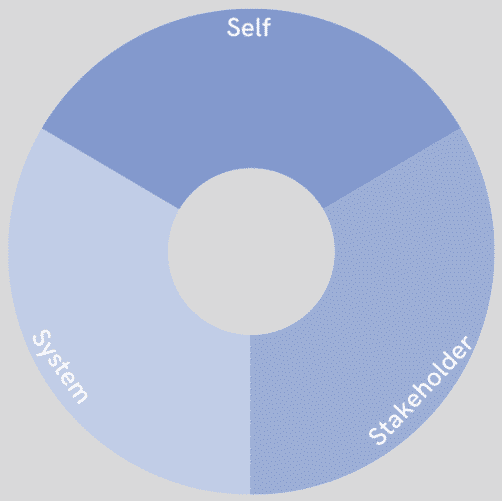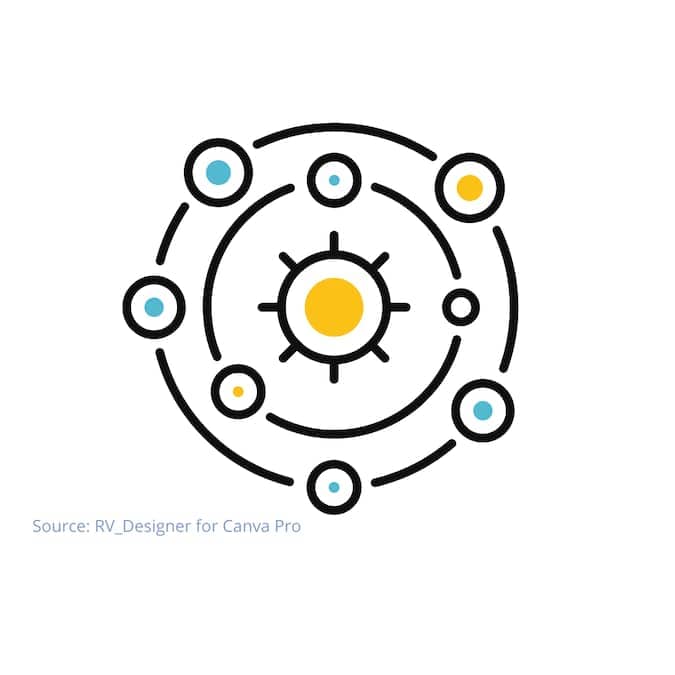In a world where rapid change is now the norm, innovation has become essential to nearly every organization’s survival. But creating a culture of innovation doesn’t mean you need to make disruptive or radical changes. Instead, I recommend a different, more sustainable approach to innovation. One that guides your team toward becoming collaborative, adaptable, and capable of meeting the challenges of the environment in which you operate.
I work with organizations that wish to transform their cultures and build healthy, inclusive, and, yes, innovative processes, programs, and products. And I’ve found that while wholescale do-overs may work on the surface, they often lead to collateral damage, such as a decrease in employee morale due to unwelcome change. So I offer an alternative that favors the adoption of incremental improvements and the growth of every person in the organization (not just leadership). This fosters innovation and positive organizational change.
But, what exactly are we striving for?
What is an Innovation Culture?

An innovation culture is one where the team members give themselves space to pause and examine their purpose through the viewpoint of the people they serve. This empowers them to iterate and ensure everyone is on board before they move forward toward positive change.
I’m often asked how to create a culture of innovation in the workplace. But it’s important to note that innovation applies to many different settings, including educational institutes and philanthropic organizations where team members strive to serve a greater purpose within complex systems. Regardless of the setting, however, I’ve noticed that there are three anchors to creating a culture of innovation within an organization and its ecosystem. Successful innovating comes down to the following:
- Purpose
Your purpose must be clear, inclusive, and communicated throughout your organization. Furthermore, it’s crucial to ensure you have alignment and that you revisit your purpose and alignment as you evolve. Your team must have a current understanding of how things are done and why so you can collaborate effectively. - Permission
Although leadership often assumes the burden of driving innovative ideas, it doesn’t have to be that way. You can cultivate an innovation culture at all levels of the organization. The best ideas will often come from those who build your products or deliver your services day-to-day. From this vantage, leadership’s responsibility is to create a safe environment where people can be authentic and share their perspectives. - Progress
A big part of ensuring that people feel safe is to make it clear that mistakes are normal and expected within your organization. Reward people for conducting tests, measuring their progress, and reporting what they’ve learned in addition to celebrating their successes.
How to Create and Sustain a Culture of Innovation
Creating and sustaining an innovation culture isn’t a one-time initiative. It’s a cyclical undertaking that requires a keen appreciation of three major forces that play a role in this process: the self, the system, and the stakeholders. Each of these forces can propel or repel creativity and innovation.

These forces work very much like an ocean current. You can’t see them, but they’re always there and they can come at you with such strength that they propel you along. Also like ocean currents, the forces can shape entire ecosystems. If you’re aware of them, you can begin to anticipate their behavior and move with them. If you don’t pay attention, however, they can catch you off guard, sweeping you off course in directions you may not appreciate.
This is why clarifying your purpose and communicating it to your entire organization is so important for those who wish to pursue an innovation strategy. If everyone knows and is in alignment with your direction, you can work with each of the forces to accomplish your goals.

Let’s start by examining the role of the self.
The Self – Encouraging Individual Growth and Empowerment
Every person in your organization affects your ability to accomplish your mission and they each bring unique gifts to the table. They may also bring limited ways of thinking, however, that can inhibit their ability to embrace innovation and effect change. Especially within the construct of your larger organization.
For example, consider how you might react to uncertainty at work. For many people, their cultural narrative suggests that they have to be perfect and can’t make any mistakes. So when faced with the unknown, these individuals may become fearful of failure and think:
- “This isn’t going to work,”
- “I’m not qualified to do this,” or
- “I’m not an entrepreneur, how am I supposed to come up with innovative ideas?”

The Opportunity
We have the ability to reframe this way of thinking and we’re starting to see this in some organizations. Little by little, people are telling themselves (and each other) that we need to embrace failure because it’s how we learn. This means that those of us coping with cultural messaging that abhors failure must adapt. We need to become aware of that messaging and confront it, so we can adopt healthier, more productive ways of thinking.
The trouble is this is all very instinctual. Our underlying cultural beliefs motivate and drive us. And, with something as instinctual as fear, we feel we’re alone in dealing with it. So when I work with individuals within organizations, we focus on building awareness of each person’s paralysis points so they can begin to recognize the things that trigger them. I’ve found that once people recognize these triggers they become less scary. They become more capable of identifying the source of their concerns, facing it, and deciding how they wish to press forward.
When, as an organization, you’re creating a culture of innovation en mass, you gain a common language and can support each other. In doing so you:
- Empower employees to solve problems creatively without fear of judgment.
- Effectively communicate that failure is a normal, acceptable part of your work.
This often takes many conversations, until people really understand what this work is about. A one-time, random conversation, isn’t going to do it. This is a cultural transformation your entire organization needs to go through so everyone feels supported.

The System – Understanding and Working Within Your Ecosystem
Once you begin to understand the biggest showstoppers within the self, you can start to inspect the system. When I say “the system” I mean the entire ecosystem within which your organization operates and your role within that ecosystem.
Sometimes it’s helpful to map it out. If you are an educational institution, for example, your ecosystem may consist of national and regional regulatory agencies, your student body and their parents, community stakeholders, etc. So, before you can pursue your organization’s purpose, you must understand how each of these entities will support or compete with your mission.
To complicate matters further, sometimes there are significant forces and unique subcultures at play within an ecosystem. Continuing with the education example, in some countries education is overseen by a central ministry of education, or by state or local governments. In others, however, private enterprise is the primary force behind education because supply is unable to keep up with demand. This may influence the purpose of your educational institution and how you can move forward. You may think your purpose is to, well, educate. But, in some environments, it may be more about introducing societal norms and building productive citizens that will shape the future of society.
The Opportunity
It’s important to understand these subtleties in perspective. The people (the “selves”) within this system may be thinking “I need to learn, so I can get a good job and make money.” But, certain stakeholders within the system have goals that are less individualistic. They wish to educate people so they will do things in an orderly fashion and support the greater good. It is possible, of course, for both to be true and for both entities to achieve their goals, but only if their goals complement each other.
So, when exploring the system and its role in helping you create an innovative culture, it’s important to understand that each entity within the system can have conflicting goals. You will need a clear understanding of what you’re dealing with and what the rules are so you can work within the system and move with it (like the ocean current), rather than against it.
Now, some may argue that innovators have an opportunity to break or redefine the rules. And, I would agree, but within reason. You need to understand what the rules are and the consequences of breaking them so you know which boundaries are flexible and which are not.

The Stakeholders – Communicating and Gaining Buy-In
The final force to contend with is your stakeholders. Regardless of whether you offer a service or a product, it will touch different groups of people – different elements of society that you need to be cognizant about. Once again, when you are creating a culture of innovation, mapping this out can help. Who does your organization impact? How does this affect your purpose? And, who do you really serve?
The Opportunity
The most important thing to understand here is that communication is vital. You won’t be able to make every stakeholder happy all the time because they may have conflicting interests. Your organization’s investors, for instance, may have a completely different idea of what success looks like then your customers. You need to strike a balance between these competing interests and communicate throughout the whole process.
Another key point to remember is that communication isn’t one-directional. Quite the opposite. Communication often means listening to your stakeholders. This allows you to gain insight into their experiences and discover what they truly want without judgment. Listening in this manner can help you come up with some fantastic ideas. Ideas that can be the impetus of innovative solutions your stakeholders want and need.
Creating a Culture of Innovation: The Endless Journey
If you recall, an innovation culture is one that embraces the concepts of purpose, permission, and progress and makes time for innovation. In other words, you invite your entire organization, not just your leaders, to define your vision. Then you support your people in the pursuit of that vision, by creating a safe, diverse, and inclusive environment that rewards incremental progress.
Once we’ve clarified our goals, we can roll up our sleeves and do the work. This involves gaining a firm understanding of the people (selves), systems, and stakeholders that will empower or inhibit our ability to move forward. Then using that knowledge to improve our ability to work within those constraints and effect change.
This rewarding work is cyclical, not a step-by-step process. It is an iterative, fluid, dynamic process that may fall outside your comfort zone, but with the right partner is completely attainable. Contact me today to learn more about my work and how I can help your organization create a culture of innovation.





